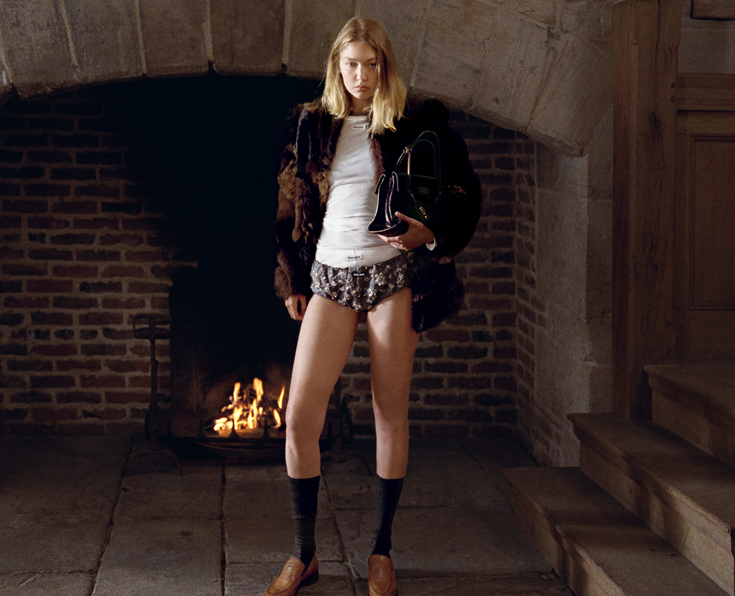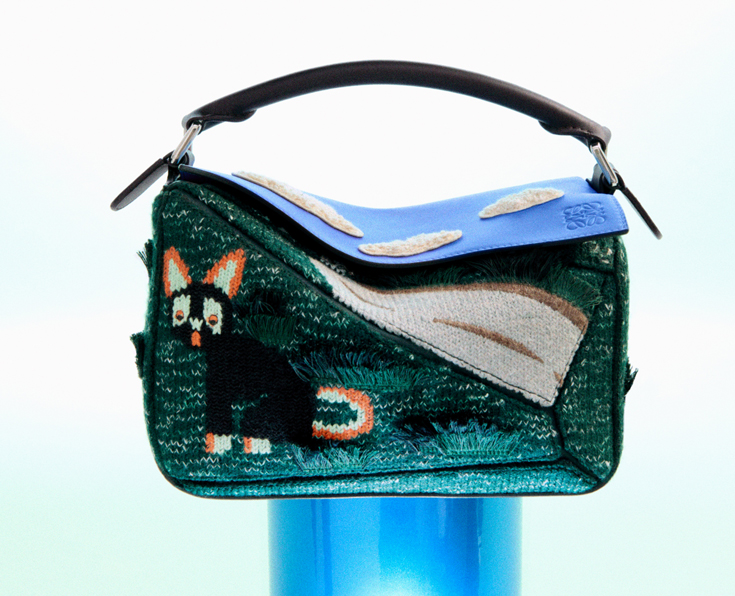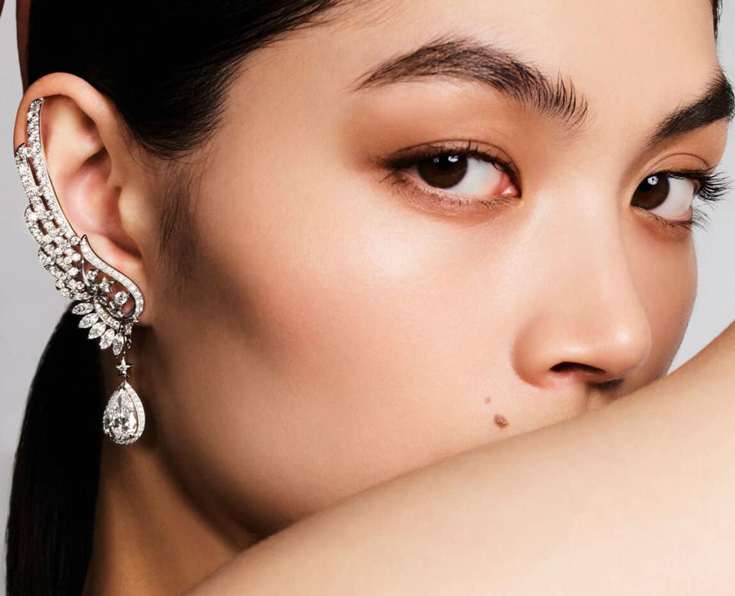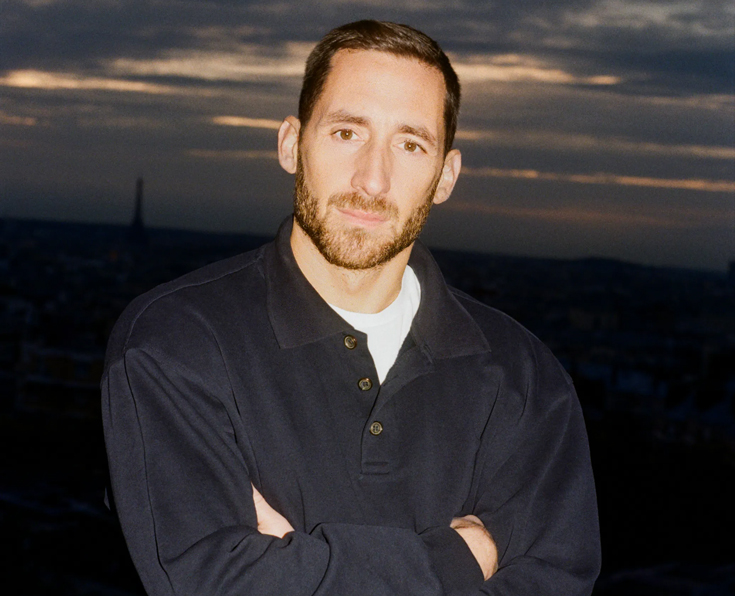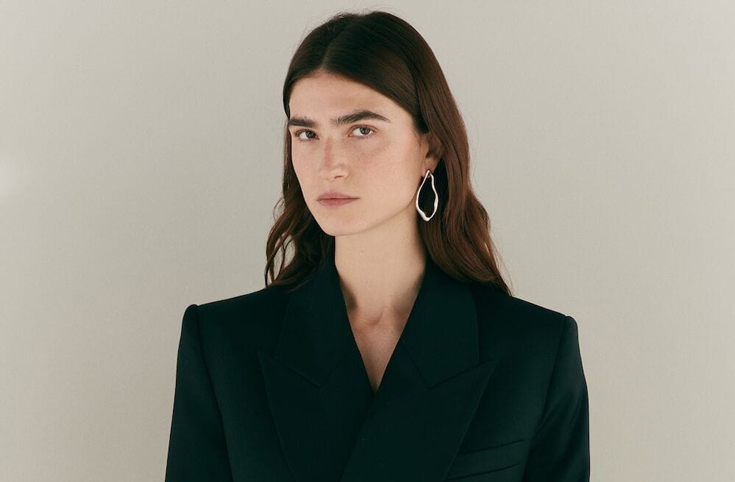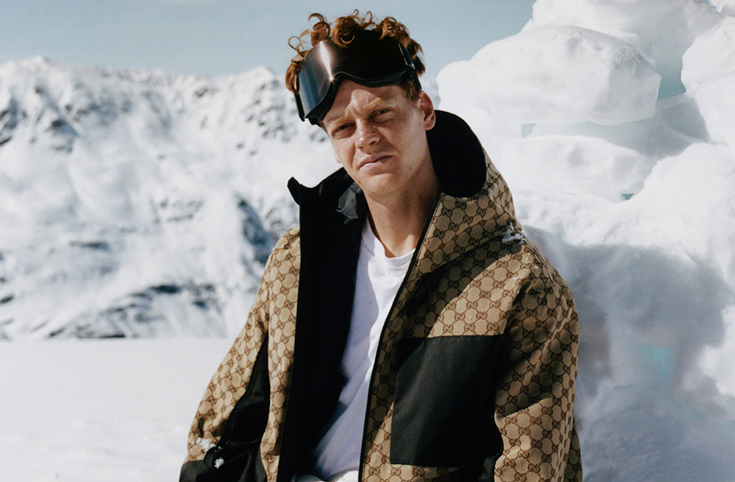10 Hauntingly Fashionable Horror Films
Horror films have always been fertile terrain for killer fashion. With a vast range of production values from critically-acclaimed to exploitation, shoestring cinema, and a sweeping spectrum of subgenres – everything from gross body horrors to psychological thrillers, smutty horror-comedies and spine-tingling animations – the clothing worn by characters both cute and creepy go a long way in setting the scene, defining characters and enhancing the overall atmosphere, from the glamorous to the grotesque. Think dainty babydoll dresses and mod Sixties skirts to decrepit wedding gowns and blood-covered corsets. Whatever the wardrobe, horror movies have a way of making the macabre look chic.
So, with spooky season in full swing and All Hallows Eve just days away, we’ve rounded up the top ten most fashionable horror flicks from award-winning cult classics to allegorical indie shorts. These films showcase how fashion can elevate horror into a cultural commentary. So curl up with a cosy blanket, turn off the lights and prepare to be scared… in style.
Midsommar (2019)
Written and directed by Ari Aster, 2019’s A24 folk horror film Midsommar takes the phrase “cult classic” to a whole new level – both in narrative and fashion. Costume designer Andrea Flesch dives headfirst into Swedish folklore, transforming what could have been a standard horror flick into a high-fashion nightmare. Picture this: flower crowns that make you want to frolic in a sun-drenched meadow, delicate floral embroidery that screams “whimsical,” and airy white linens.
The film follows Dani, played by Florence Pugh, as she accompanies her neglectful boyfriend on a trip to a remote Swedish village where the sun never sets, all in the name of studying their historic midsummer celebrations. But as the plot thickens, so does the fashion, creating a jaw-dropping juxtaposition between the cult’s serene exterior and the grisly horrors lurking beneath their pastel-clad façades. With every twirl of Dani’s ethereal dresses, Flesch spins a tale of transformation that highlights how clothing can reflect both innocence and impending doom. In Midsommar, the sun-soaked fashion is as captivating as it is chilling, proving that even in horror, style is everything – especially when it’s paired with a side of psychological dread.
Jennifer’s Body (2009)
A noughties cult classic, Karyn Kusama’s Jennifer’s Body, written by Diablo Cody, serves up a heaping portion of campy horror with a side of sharp wit. Starring Megan Fox in full femme fatale mode, the film follows the darkly comedic tale of Jennifer, a high school cheerleader who becomes possessed by a demon, turning her into a boy-hungry predator. On her murderous journey, she unleashes chaos on her unsuspecting classmates while navigating the complexities of friendship, desire, and betrayal. The costume design is as delightfully sleazy as you’d expect from an angsty American high school horror, with jaw-dropping outfits that straddle the line between seductive and sinister. Fox wears skimpy cheerleader uniforms, skin-tight baby tees and micro mini skirts that evolve from innocent pastels to blood-red dresses and dark lace as she undergoes this sinister visceral transformation.
The Substance (2024)
The Substance, written and directed by Coralie Fargeat, is a striking exploration of body horror that examines the complexities of womanhood through a visceral lens. Starring Demi Moore and Margaret Qualley, the film delves into the haunting transformations of its characters, evoking a Cronenberg-esque atmosphere where the body becomes a battleground for identity and autonomy.
Something of a feminist allegory, The Substance uses grotesque imagery to symbolise the struggle for self-empowerment, while its wardrobe choices play a pivotal role in conveying this narrative. The costumes blend elements of high fashion (think metallic, hot pink bodysuits) and dystopian aesthetics, with bold silhouettes that reflect the characters’ teetering psychological states. Moore’s character often dons sharp, tailored outfits that project power yet mask an underlying vulnerability, while Qualley’s looks fluctuate between high octane ’80s glamour and unsettlingly clinical colours, mirroring her character’s gruesome metamorphosis.
Fargeat masterfully uses style to enhance the film’s themes, with vibrant colours and intricate textures that juxtapose beauty and horror, not only captivating audiences but also serving as a commentary on the societal expectations of the modern woman.
Rosemary’s Baby (1968)
How do you make horror chic? You put Mia Farrow in a lace-lined baby doll with kitten heels, give her a pixie cut and a hauntingly delicate aura that embodies both innocence and impending doom. That’s what costumer Anne Roth did for Roman Polanski’s Academy Award-nominated Rosemary’s Baby. Inspired by the 1967 horror novel by American writer Ira Levin, the film blends high fashion with psychological terror, as Farrow’s ethereal wardrobe underscores her character’s descent into paranoia and despair. Each outfit, from her flowing nightgowns to tailored retro dresses – as she transitions from a hopeful young mother to a woman trapped in a web of dark conspiracies – adds to the tension and makes style as unsettling as the narrative itself.
The Corpse Bride (2005)
The Corpse Bride, written and directed by Tim Burton and Mike Johnson, is a visual stop-motion feast where fashion plays a pivotal role in storytelling. The film features an enchanting blend of Victorian elegance and gothic fantasy, showcasing a striking contrast between the living and the dead.
Emily, the titular Corpse Bride, dons a tattered yet ethereal gown in shades of pale blue, complete with a flowing veil that adds to her ghostly allure. Her dress, adorned with intricate lace and delicate embroidery, reflects her tragic past and longing for love. In contrast, Victor’s attire features tailored suits with subtle nods to the era, combining classic tailoring with a touch of whimsy that suits his awkward charm.
Pearl (2022)
Ti West’s X or Maxxine could easily make it on this list, but in the X trilogy, Pearl takes the fashion cake. Co-written by Mia Goth, who plays the title lead, the film dives deep into her twisted psyche as she yearns for fame and acceptance, viciously murdering anyone who dares to get in her way. In her bright red dress with puffy sleeves and a fitted bodice, her hair styled in soft waves and decorated with a vintage ribbon, Pearl embodies a vibrant facade that belies her dark intentions.
The look, accessorised by an air of innocence and a sinister smile, creates a jarring contrast that captivates and unnerves, perfectly reflecting her internal struggle between longing for love and succumbing to madness.
Suspiria (1977)
Directed by Dario Argento and co-written with Daria Nicolodi, 1977’s Suspiria is a psychedelic horror extravaganza that drips with style and gore in equal measure. From its vibrant cinematography to the iconic Goblin score, every frame is drenched in a surreal beauty that lingers long after the credits roll. The film’s striking costumes and elaborate set designs elevate it beyond mere horror, transforming it into a visual ballet (literally) where every dagger and drop of blood is expertly choreographed. From the striking crimson of the blood-soaked ballet costumes to the luxurious fabrics worn by the sinister faculty, each outfit serves as a visual cue to the characters’ true natures. Madame Blanc, with her elegant, structured silhouettes and rich textures, commands attention, while the younger dancers, clad in ethereal pastels or vibrant, flowing dresses adorned with intricate patterns, embody both beauty and vulnerability.
Luca Guadagnino’s 2018 remake comes in close second when it comes to jaw-dropping fashions, with Tilda Swinton’s Madame Blanc serving looks that could stop a heart – and then dance on its grave. Her outfits, a blend of avant-garde chic and eerie elegance, transform her into a looming high-fashion spectre, as if behind every fabulous ensemble lies a sinister secret. With bold textures and sculptural silhouettes, she dances through the darkness of the dance academy like she owns the place – and let’s be honest, she kind of does.
The Shining (1980)
It’s hardly a list about fashionable films unless there’s a Kubrick included. A 1980 landscape-shifter, The Shining, co-written by Diane Johnson and Stanley Kubrick, offers more than just chilling moments in a haunted hotel; it serves up a masterclass in visual storytelling and style. From the iconic red jacket worn by young Danny to Wendy’s effortlessly layered outfits that blend practicality with understated elegance, perfectly capturing the essence of a 1970s housewife, every piece contributes to the film’s eerie atmosphere. We can’t forget the bone-chilling twins though; dressed in matching pastel blue dresses, with their eerie, synchronised presence, the pair create a haunting visual that lingers long after they’ve left the screen.
Kubrick’s meticulous attention to detail extends to the set design too, where bold colours and striking patterns echo the psychological unravelling of the characters. The stark contrast of the luxurious yet claustrophobic Overlook Hotel, paired with the unsettling symmetry of its interiors, transforms the space into a character of its own – beautiful yet menacing.
Apartment 7A (2024)
A riveting prequel to Polanski’s Rosemary’s Baby, Natalie Erika James’s Apartment 7A is a lesser known psychological horror gem to come out of 2024. Julia Garner plays Terry Gionoffrio, a struggling dancer in 1960s New York City who, after succumbing to a serious injury, finds herself drawn into dark forces by a rather eccentric, wealthy couple. They promise her fame, fortune, physical health… all she’s ever wanted. With hypnotising visions of stardom dancing in her head and the glitz of the stage calling her name, she wears sparkling costumes adorned with sequins and fringe by costume designer Michele Clapton, who masterfully weaves together glamour and unease, creating outfits that shimmer with a sinister allure. Her dancer-off-duty looks feature oversized cardigans and vintage dresses that hint at a bygone elegance, but are tinged with an unsettling air, as if the shadows of her newfound fame are never far behind.
The film, co-written by James, Christian White and Skylar James, also features a rhinestone-swathed demon whose dazzling exterior belies a wicked appetite for souls, embodying the seductive yet treacherous nature of fame itself.
With Pleasure (2020)
A burly man with a shotgun walks into a low-lit cocktail bar. A cherry-clad burlesque dancer sways in sultry, sequined fringe on stage, moving like she’s got all the time in the world. Other patrons speak in cryptic whispers, quoting in various languages vintage Italian horror, obscure poetry, long-dead political figures and great philosophers between slow sips of neon-hued cocktails. Unfurling like a fever dream that feels ripped from the giallo genre – known for its high-octane glamour, lush elegance and arresting use of vivid colour, which emerged in Italy in the 1960s – Maxwell Nalevansky and Carl Fry’s under-the-radar horror short With Pleasure dances between chic and chilling with a nod to retro high-fashion stylings that feel at once timeless and eerily disorienting.
It follows the man, an armed robber as he is drawn deeper into this campy, hallucinatory world, taunted by the patrons in their clownish makeup, sequinned suits, and fur-lined, high-class garb, each character more surreal than the last. As he spirals toward despair, he turns the shotgun on himself, desperate to escape the madness of this decadent nightmare.
Find it on Alter, YouTube’s go-to channel for horror short films from independent writers and directors.

